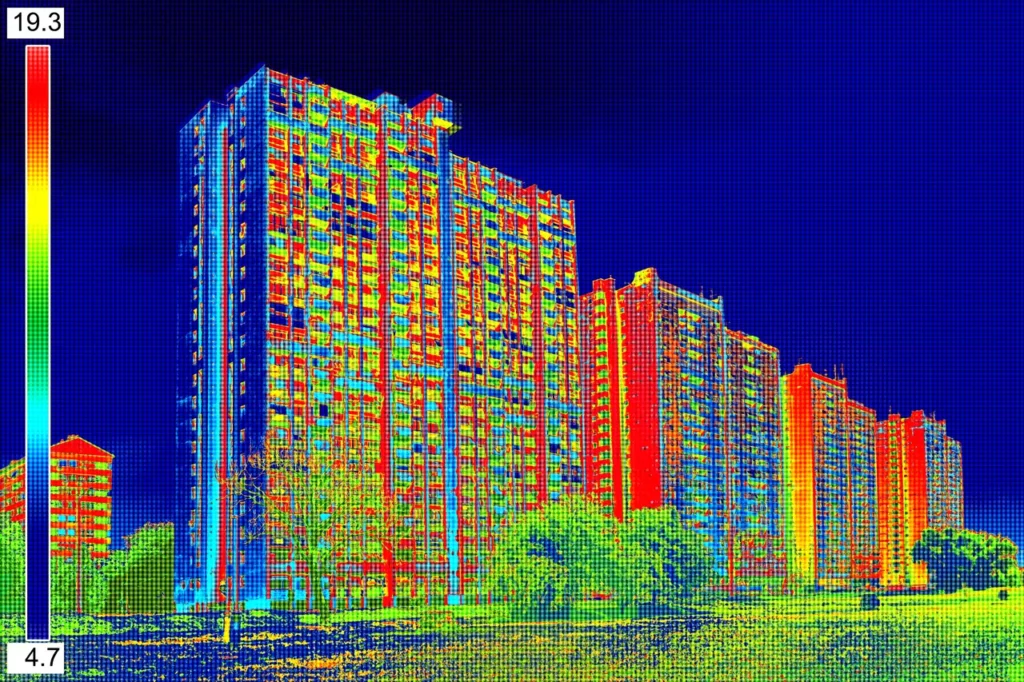
Every now and then, as chair of the BET committee, I get asked what I think about a certain model or brand of a thermal imaging camera and whether it meets the NEBB standards. Getting emails like this is good for me. They trigger me to do a little research, re-educate myself on the features of the cameras, and see what’s new on the market.
Over the years, the technology that’s been developed and implemented into the cameras has been phenomenal, while pricing has continued to drop.
The level of camera selected by NEBB and placed into the instrument list was a compromise. We tried to select a camera that would have the features needed to produce a pretty good image for our reports but not be so price-prohibitive that it would keep some people out of the market simply because they could not afford the camera.
After a recent review of a family of cameras, it may be time to bump up the level of cameras just because of the current pricing structures. With that in mind, here are some things to think about if you are in the market for a camera.
Temperature Range
First and foremost, what are you going to be using the camera for? If you are just going to be analyzing building enclosures, then the temperature range of the camera does not need to be as great as what would be needed if you were doing buildings and then, let’s say, boilers or steam traps. So, keep the temperature range in mind.
Resolution
A little more important is the camera resolution. Just like your computer monitors and TVs, the picture improves as the pixel range increases. Our standard is 160 x 120, and most of the very low-end cameras are there.
Thermal Sensitivity
Another factor is the thermal sensitivity. The NEBB standard is 0.1 @ 86 (F), meaning at 86 degrees, the camera is able to distinguish temperatures that differ by 0.1 degrees. This is pretty good, but for a few bucks more (and still what I would consider a very affordable camera), you can get down to 0.05. Just keep this in mind for now.
NETD
The last item is what is called the Noise Equivalent Temperature Difference, or NETD. This one is kind of hard to describe, but it literally is the “noise” of the image that the camera produces. This is a pretty big item, and the NEBB Standard does not address this; we may want to revisit our standard in the future.
In this case, the lower the number, the better the image that can be produced. Some of the low-end cameras will be up in the 80 to 100 range. What I consider to be a great camera for buildings is in the 45 to 60 range. You can get a good camera for under $2,000 that is in the 80 to 100 range, but you can get a great camera that will be in the 45 to 60 range around $5,000 or less.
When I selected our camera, I had the vendor bring in a whole family of models. I looked each one over, focusing on the quality of the image I was going to be able to put in my reports. The camera I selected has a NETD of 45 and believe me, the camera has paid for itself and in the quality of images it can produce with outside to inside temperature differential as low as 4F. At the suggested 10F differential, the quality is perfect.
This brings me to another important point: the ability to interpret an image takes time and experience. The quality of the camera really helps with that education process, and your ability to interpret the image. I’ve made quite a few poor interpretations of what I thought I was seeing versus what was actually happening; everyone has! At today’s prices, this is a no-brainer. Spend the extra money and get a better camera.
Everyone who is going to be writing a thermal imaging report should also have attended at least a level I American Society of Nondestructive Testing (ANT) certified thermal imaging course.
The level I class focuses on how to operate your camera and how to take a quality image. The level II course is a refresher of level I but then focuses on how to interpret the images produced by the camera. This was quite an eye-opener for me and was a huge benefit to my thought process. These courses are several days long and can be pretty tough, but well worth the time and money. Plus, they are required by the USACE if you are going to perform thermal imaging on their projects.
I hope this helps. Happy hunting!
